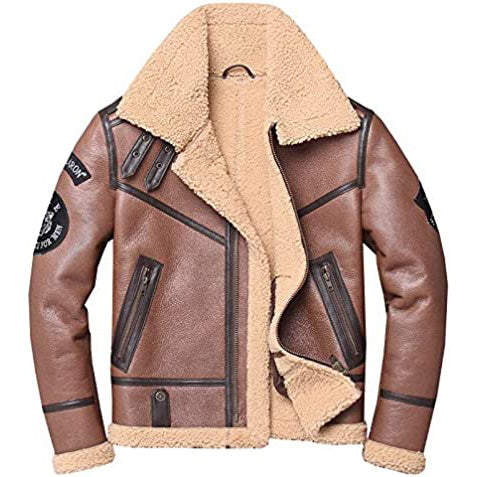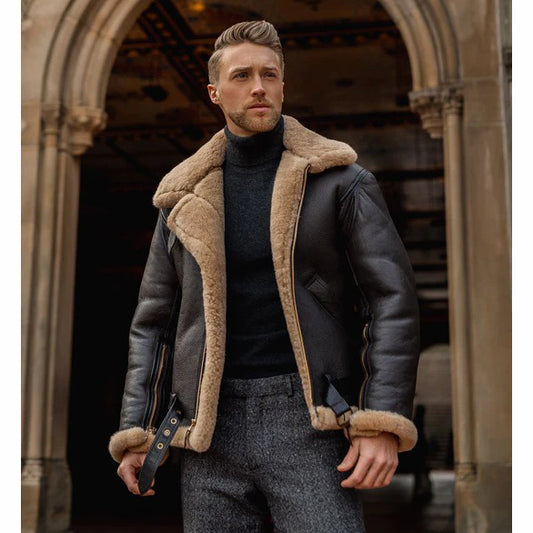Introduction: The Timeless Allure of Leather Corsetry
The soft creak of leather. The unmistakable silhouette. The transformative power of a well-crafted corset. Few garments evoke such visceral reactions as the leather corset. This iconic piece has transcended centuries, continually reinventing itself while maintaining its fundamental appeal.
Leather corsets represent a fascinating intersection of function, fashion, and cultural statement. Originally designed as supportive undergarments, these structured pieces have evolved dramatically through history from medieval bodices to Victorian waist-cinchers to modern fashion and alternative subculture staples. The durability and moldability of leather made it an ideal material for these body-shaping garments, creating a legacy that continues to influence fashion today.
At Jackets Kingdom, we believe understanding the rich heritage behind leather corsetry enriches the appreciation of these timeless pieces. Let's journey through the centuries to uncover how the women genuine leather corset transformed from a practical necessity to a powerful symbol of fashion, identity, and self-expression.
The Ancient Origins of Body Modification (3000 BCE - 1500 CE)
The concept of body modification through tight-fitting garments dates back thousands of years. While not leather corsets as we recognize them today, the earliest precursors can be traced to ancient civilizations:
- In Minoan Crete (2000 BCE), artwork depicts women wearing tight bodices that pushed up the breasts
- Ancient Greek and Roman women used bands of linen or soft leather to support and shape their bodies
- Evidence suggests similar practices in ancient India and Egypt, where bodice binding served both practical and ceremonial purposes
The true predecessor to modern corsetry emerged in the Middle Ages. During the 12th century, women began wearing simple bodices stiffened with paste or rudimentary boning. By the 15th century, these evolved into more structured garments known as "pairs of bodies" - the first true corsets.
It was during this period that leather construction became more prominent in corsetry. The material's natural strength and ability to mold to the body made it ideal for creating the desired silhouette while providing durability that cloth alternatives couldn't match.
The Renaissance: Birth of the Structured Corset (1500s - 1600s)
The Renaissance period marked the emergence of the corset as we more readily recognize it today. During the 16th century, the whalebone corset (sometimes reinforced with leather) became fashionable among European nobility, creating the distinctive conical silhouette characteristic of the era.
Catherine de Medici, wife of King Henry II of France, is often credited with popularizing rigid corsetry at the French court in the 1550s. She reportedly banned "thick waists" from court appearances, cementing the corset's role in aristocratic fashion.
Renaissance corsets typically featured:
- A conical shape rather than hourglass
- Heavy leather construction or leather reinforcement
- Front busk (a rigid piece creating the straight front)
- Shoulder straps for additional support
- Elaborate decoration, including embroidery and jewels among the wealthy
These early corsets weren't hidden undergarments but fashionable outer garments, often made visible as part of elaborate court dress. Leather versions were particularly prized for their strength and enduring shape.
The Baroque and Georgian Eras: Function and Form (1650s - 1800)
During the Baroque period, corsets evolved further, with increased emphasis on technical construction. The stomacher - a decorative, stiff panel attached to the front of the corset - became popular, often elaborately decorated with embroidery or jewels.
The 18th century witnessed important developments in corset design:
- Introduction of metal eyelets allowing for tighter lacing
- Increased use of whalebone reinforcement alongside leather elements
- Development of more sophisticated cutting techniques
- Greater emphasis on the hourglass figure versus the conical shape
It was during this period that leather corsetry became somewhat less common among the upper classes, as silk, cotton, and linen became preferred materials. However, leather remained important for working-class corsets, where durability was essential.
The Victorian Obsession: Peak Corsetry (1800s - 1900s)
The Victorian era represents the pinnacle of corset culture. Industrialization revolutionized corset production, making them widely accessible across social classes. The ideal silhouette evolved dramatically through this period, from the Empire waistline of the early 1800s to the dramatic hourglass figure of the mid-Victorian period to the S-bend of the 1890s.
Key developments during this era included:
- The invention of the metal eyelet in 1828, allowing for tighter lacing
- The patenting of the first front-opening busk in 1848
- The development of steam-molding for corsets in the 1870s
- The waist-training phenomenon, where waist reduction became a fashionable pursuit
While steel and whalebone dominated Victorian corsetry, leather corsets maintained their presence, particularly for specialized purposes. Leather's strength made it ideal for medical and orthopedic corsets, as well as for riding and sporting activities where durability was essential.
The late Victorian period also saw the emergence of fetish corsetry, with leather becoming associated with alternative sexuality. This connection would later influence 20th-century subcultural adoption of leather corsets.
The Great Liberation: Corsets Fall from Favor (1910s - 1940s)
The early 20th century witnessed a dramatic shift in corsetry practices. Several factors contributed to the decline of strict corseting:
- The women's suffrage movement advocated for freer, more practical clothing
- World War I created material shortages and needed women in active work roles
- Fashion designers like Paul Poiret and Coco Chanel promoted more natural silhouettes
- Medical professionals increasingly criticized extreme corseting practices
The corset didn't disappear entirely but evolved into lighter foundation garments. The elastic girdle replaced the boned corset for many women, offering more comfort while still providing some body modification.
During this period, leather corsetry became even more specialized, primarily used in medical applications, performance wear, and increasingly, as part of alternative sexual expression.
Mid-Century: The Quiet Years (1940s - 1970s)
The mid-20th century represents perhaps the lowest point in mainstream corset popularity. The New Look of Christian Dior in 1947 briefly revived waist emphasis, but most women achieved this through girdles and waist cinchers rather than traditional corsets.
However, it was during this quieter period that important developments occurred in specialized communities:
- Corset fetishism became more organized through publications and clubs
- Early BDSM communities embraced leather corsetry for its symbolic power
- Theatrical and historical reenactment groups maintained corsetry traditions
- Medical corsets continued to evolve for therapeutic purposes
These niche applications kept corsetry techniques alive during decades when mainstream fashion had largely abandoned structured bodywear.
Subcultural Renaissance: Punk, Goth and BDSM (1970s - 1990s)
The late 20th century witnessed a dramatic revival of interest in corsetry, particularly leather corsets, through various subcultural movements:
- Punk fashion in the late 1970s reclaimed the corset as anti-fashion statement
- The goth subculture embraced Victorian aesthetics including corsetry
- Designers like Vivienne Westwood brought corsets to high fashion runways
- BDSM culture emerged more visibly, with leather corsetry as a prominent element
Unlike historical corsets, these modern incarnations were typically worn as outerwear rather than foundation garments, symbolizing rebellion against conventional fashion norms. The leather corset became particularly significant as a symbol of alternative sexuality and personal empowerment.
During this period, traditional corsetry skills were revived and modernized. New materials complemented traditional leather construction, allowing for greater comfort while maintaining the distinctive silhouette.
Mainstream Rediscovery: Fashion's Corset Revival (1990s - 2000s)
The 1990s witnessed corsets burst back into mainstream fashion consciousness, largely through Madonna's iconic "Blonde Ambition" tour in 1990, where Jean Paul Gaultier's conical corsets became cultural touchstones.
This high-profile endorsement triggered a cascade of corset influences across fashion:
- High-end designers including Alexander McQueen, Thierry Mugler, and Versace featured corsets prominently
- Celebrity endorsement from figures like Dita Von Teese popularized corsetry as glamorous fashion
- The Victorian revival trend in the late 1990s incorporated historical corset elements
- Burlesque performances brought theatrical corsetry to wider audiences
Leather corsets particularly benefited from this revival, as they symbolized the perfect blend of historical reference and contemporary edge. The material's association with rebellion made leather corsets especially appealing to those seeking to make a bold fashion statement.
Contemporary Corsetry: A New Golden Age (2010s - Present)
Today, we're experiencing what many consider a new golden age of corsetry. With greater understanding of safe practices and improved construction techniques, modern corsets offer unprecedented comfort alongside dramatic aesthetic effects.
Several trends characterize contemporary corset culture:
- Waist training has reentered mainstream consciousness through celebrity endorsement
- Handcrafted corsetry thrives through independent makers and platforms like Etsy
- Inclusivity has expanded corsetry beyond traditional gender and body type limitations
- Historical techniques are being preserved while incorporating modern innovations
Leather remains one of the most coveted materials for high-end corsetry. Modern leather corset designs range from historical reproductions to avant-garde fashion statements, demonstrating the material's versatility and enduring appeal.
Expert Opinion: The Enduring Significance of Leather in Corsetry
Dr. Valerie Steele, fashion historian and author of "The Corset: A Cultural History," notes: "Leather has remained significant in corsetry through centuries because it combines practical qualities with powerful symbolism. Few materials can match leather's ability to be simultaneously strong yet moldable, imposing yet intimate. The leather corset has survived fashion's cycles precisely because it transcends them."
Personal Experience: Finding Quality in Modern Leather Corsetry
As specialists in leather fashion at Jackets Kingdom, we've observed a growing sophistication among corset enthusiasts. Today's customers understand that quality leather corsetry requires expert craftsmanship and proper materials.
When selecting a leather corset, we recommend prioritizing:
- Full-grain leather that will mold to your body over time
- Proper steel boning (not plastic) for structure
- A well-designed pattern that accommodates your unique proportions
- Sturdy lacing and grommets that can withstand tension
- A proper breaking-in period to ensure comfort and longevity
The investment in quality pays dividends in both comfort and durability, allowing a well-made leather corset to become a treasured wardrobe element for years.
Conclusion: The Future of Leather Corsetry
As we look to the future, leather corsets seem positioned for continued cultural relevance. Their unique combination of history, craftsmanship, and bold aesthetics ensures they'll remain desirable fashion elements across various communities.
Modern approaches to body positivity have transformed corsetry from symbols of oppression to tools of empowerment and self-expression. Today's corset wearers choose these garments for personal aesthetic reasons rather than social conformity, representing a fundamental shift in their cultural meaning.
For those intrigued by the rich heritage of leather corsetry, Jackets Kingdom offers expertly crafted pieces that honor traditional techniques while embracing modern comfort innovations. Explore our collection to discover how this fascinating garment continues to evolve in the 21st century.
Frequently Asked Questions
Are leather corsets more durable than fabric corsets?
Yes, properly maintained leather corsets typically outlast fabric alternatives by years. Leather's natural strength and ability to adapt to the body make it an exceptional corsetry material, though it requires different care than fabric versions. With proper conditioning and storage, a quality leather corset can last decades.
Can leather corsets be worn comfortably for extended periods?
A properly fitted leather corset can be comfortable for several hours of wear. The key factors are correct sizing, adequate breaking-in period, and appropriate lacing technique. Leather actually has advantages for comfort as it molds to the wearer's body over time, creating a custom fit that fabric corsets can't match.
How should I care for my leather corset?
Leather corsets require specific care: wipe with a soft cloth after wearing to remove body oils, condition the leather every few months with appropriate leather conditioner, store hanging or laid flat (never folded), and avoid exposure to direct sunlight or heat sources. Never immerse in water or use harsh cleaning products.
Are leather corsets suitable for waist training?
Leather corsets can be excellent for waist training when properly constructed with steel boning and designed specifically for this purpose. The material provides excellent tension and support. However, waist training should always be approached gradually and safely, preferably with guidance from experienced corsetieres.
What's the difference between fashion corsets and authentic leather corsets?
Fashion corsets (sometimes called "costume corsets") typically lack the structural elements necessary for waist reduction or proper support. Authentic leather corsets feature steel boning, sturdy lacing systems, and properly prepared leather that can withstand tension. Fashion versions focus on appearance while authentic corsets balance aesthetics with functional construction.




